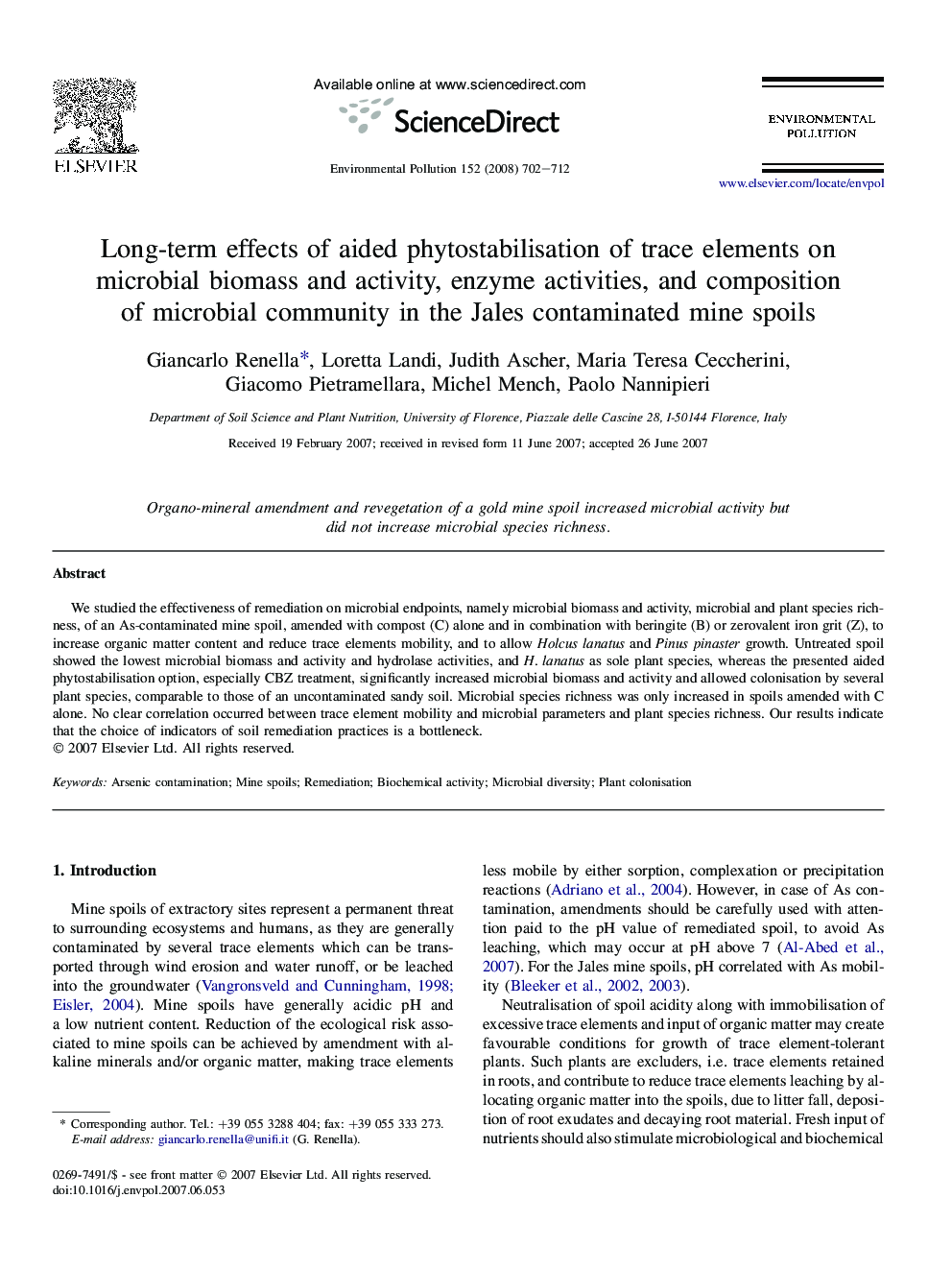| Article ID | Journal | Published Year | Pages | File Type |
|---|---|---|---|---|
| 4426860 | Environmental Pollution | 2008 | 11 Pages |
We studied the effectiveness of remediation on microbial endpoints, namely microbial biomass and activity, microbial and plant species richness, of an As-contaminated mine spoil, amended with compost (C) alone and in combination with beringite (B) or zerovalent iron grit (Z), to increase organic matter content and reduce trace elements mobility, and to allow Holcus lanatus and Pinus pinaster growth. Untreated spoil showed the lowest microbial biomass and activity and hydrolase activities, and H. lanatus as sole plant species, whereas the presented aided phytostabilisation option, especially CBZ treatment, significantly increased microbial biomass and activity and allowed colonisation by several plant species, comparable to those of an uncontaminated sandy soil. Microbial species richness was only increased in spoils amended with C alone. No clear correlation occurred between trace element mobility and microbial parameters and plant species richness. Our results indicate that the choice of indicators of soil remediation practices is a bottleneck.
